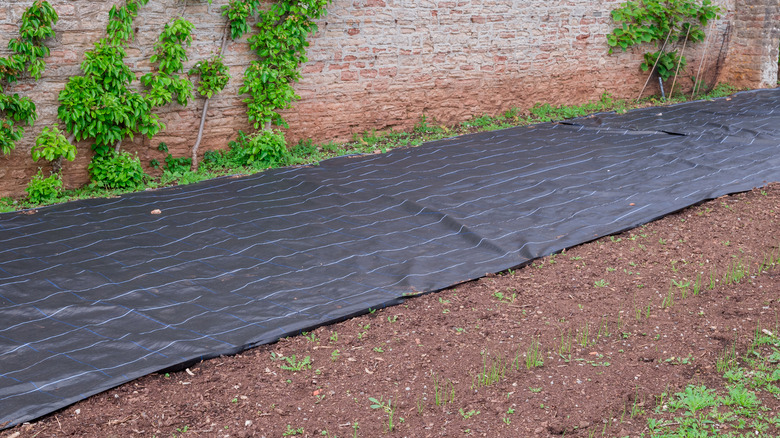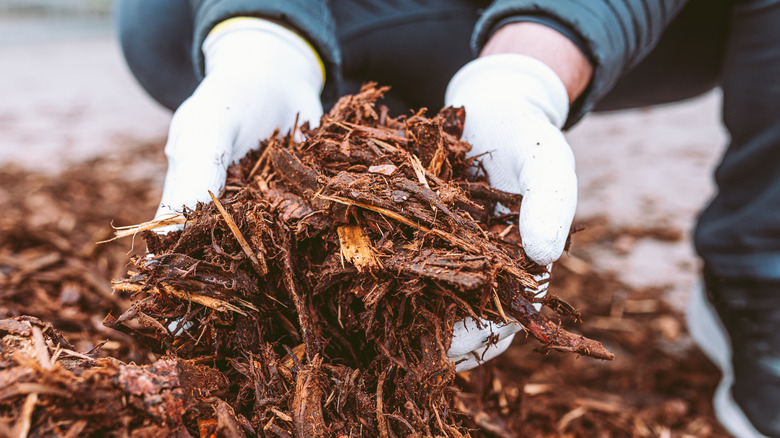Skip The Landscape Fabric And Use This Alternative Instead
Landscape fabric is often touted as a permanent solution for preventing weeds in gardens, and it's one of the most common solutions out there. But the reality is it's not possible to get rid of weeds forever — and when they come back, landscape fabric makes it a way bigger pain to get rid of them. Instead, add a few inches of mulch on top of the soil and refresh it regularly.
Typically made of polypropylene mesh, landscape fabric keeps weeds at bay for a limited time only. It's usually topped with mulch, which is blocked by the fabric from decomposing into the soil as it otherwise would; instead, the mulch sits compacted on top, blows away, or breaks down into a layer that weed seeds can easily grow in. As the fabric slowly degrades, some weeds grow right through it, making them extremely hard to remove. Polypropylene breaking down also isn't ideal for the environment, as it's a form of plastic.
Landscape fabric isn't great for your garden's health either. Not only is organic matter blocked from reaching the soil, making it less fertile over time, but water is also less able to reach plant roots. Black fabric can cause the soil to heat up too much and block earthworms from doing their soil-improving work. And you have to cut holes in the fabric for each plant, which often crowds the stems. It may work okay for annual plant beds in which the fabric is replaced every year, but landscape fabric isn't a long-term solution for home garden beds — natural mulch is a much better route.
Why mulch is better than landscape fabric
Instead of landscape fabric, use natural materials as a mulch, such as shredded bark, wood chips, pine needles, grass clippings, newspaper, or even shredded leaves from your yard. Many gardeners find these materials easier to work with, neater, and more effective at suppressing weeds than landscape fabric. Organic materials are best rather than gravel, rocks, or synthetic mulch since they will enrich the soil with nutrients as they decompose.
Mulch provides benefits in all of the areas that landscape fabric falls short: it adds healthy organic matter to the soil, helps regulate the temperature of the soil, prevents erosion, and encourages critters like earthworms and beetles. Unlike synthetic fabric, an organic mulch allows moisture to reach plant roots, and it also conserves that moisture so it doesn't evaporate as quickly. As long as you refresh the top inch or so of mulch regularly, it's effective at suppressing weeds.
Around 3 to 4 inches of mulch is typically enough to reap these benefits. Don't mix it into the soil, just layer it on top. In general, the best type of mulch for your garden is what you already have on hand, but keep in mind that different mulches may provide different nutrients and decompose at different rates. Replace the top inch or so of the mulch regularly as it breaks down; some materials need to be refreshed every year, while others can go as long as three years depending on the climate.

